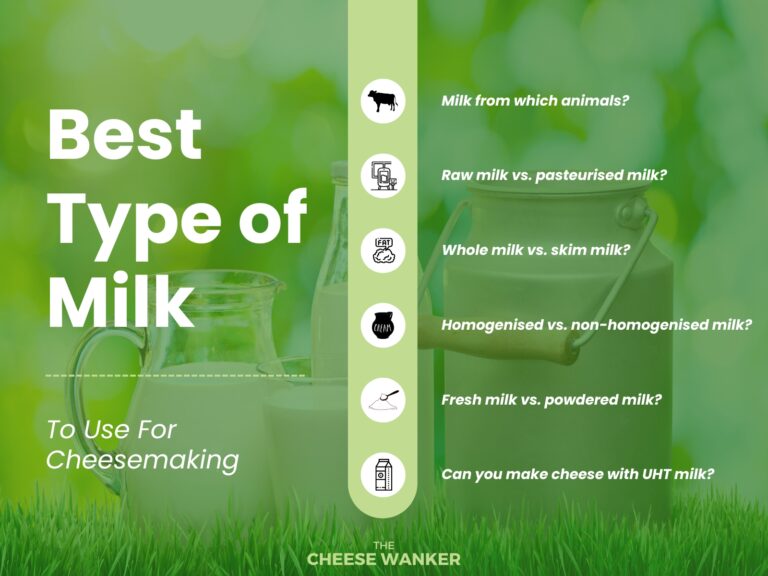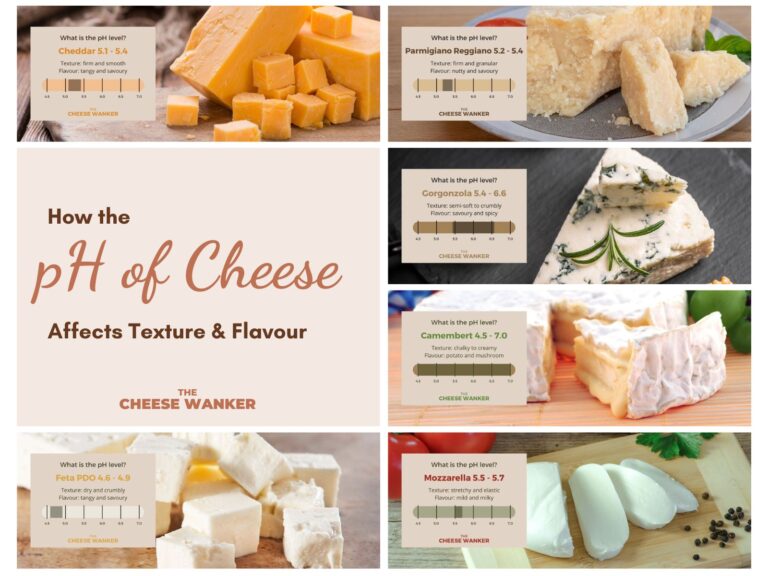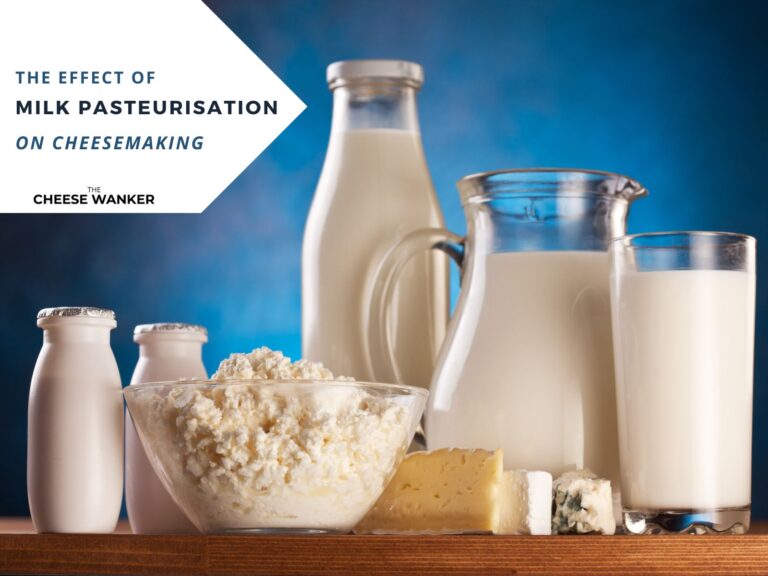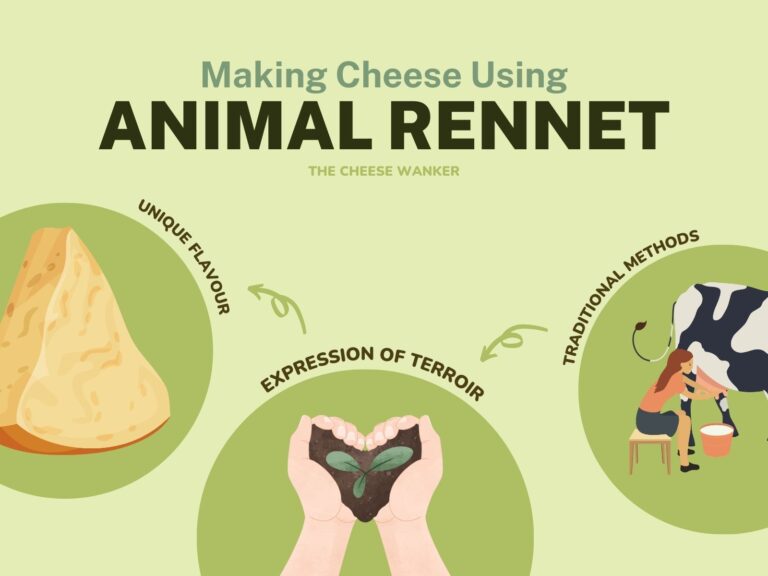Italy is home to some of the world’s most popular cheeses. Indeed, Mozzarella, Parmigiano Reggiano and Gorgonzola all call this European country home. In this article, we share with you how their famous blue cheese, Gorgonzola, is made. Read on to discover how the area of production, the traditional methods and the slow maturation all contribute to create the spectacular blue cheese that so many of us have grown to love.
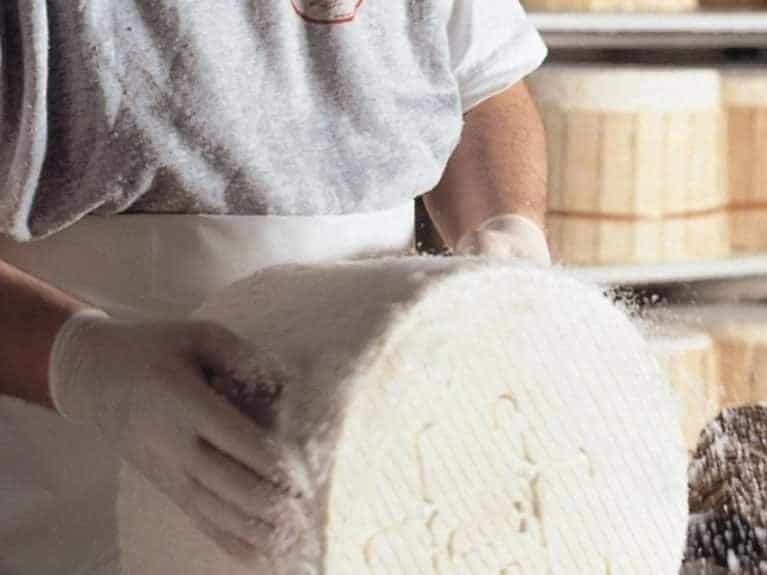
SEE ALSO: How long ago was Gorgonzola first made? →
A very popular blue cheese
During the early post World War II years, Gorgonzola became hugely popular in Italy and surrounding nations. In order to meet the increasing demand, production went from a small artisanal scale to a large commercial operation.
While this helped improve supply, the quality of the cheese was starting to decline. The main reason for this was a lack of consistency in milk handling, cheese production and maturation.
Protected by a DOP stamp
In order to preserve the heritage of Gorgonzola, the DOP or Denominazione di Origine Protetta implemented a number of strict guidelines. Overall, they published new regulations for the handling of milk and production and maturation of cheese. Because the new standards were quite costly to implement, a large number of dairies simply gave up and closed down.
In the space of less than 10 years, the number of factories producing Gorgonzola fell from 100 to just over 30. Indeed, only those select dairies were equipped to meet all the DOP requirements and uphold the quality of this famous cheese.
The area of production
The production area falls in the entire territory of the provinces of Bergamo, Brescia, Como, Cremona, Lecco, Lodi, Milan, Pavia, Varese, Monza in the Lombardy region. And Biella, Cuneo, Vercelli, Novara, Verbano-Cusio-Ossola in the Piedmont region.
The 30 dairies in those regions encompass both medium and large size production sites. Actually, they are mostly in Novara (45%), Pavia (22%) and Milan (15%). Moreover, they make all three forms of Gorgonzola, the Grande (Dolce), Media and Piccola (Piccante). We’ll get back to those in a bit.
The DOP specifications
As well as the zone of production, the DOP dictates a number of specifications when it comes to Gorgonzola. Let’s have a look at some of the more important ones.
The milk
All makers of Gorgonzola cheeses have to use pasteurised whole cow’s milk. Upon receiving the fresh milk from local farms, the cheesemaker curdles the milk at a temperature of 28-36°C. They do so by adding milk enzymes, a suspension of Penicillium roqueforti spores, selected yeasts and calf rennet.
Dry salting
After a few days, they dry salt each formed wheel in an environment with a temperature of 18-24°C. This creates the perfect surface conditions for a natural rind to form. Furthermore, it slows down the conversion of lactose to lactic acid in the cheese, to give the affineur more control over the final qualities of their product.
Maturation
During maturation, the affineur regularly perforates each wheel of Gorgonzola with a metal rod to allow air in. Consequently, the oxygen activates the strains of Penicillium roqueforti inside the cheese to start the formation of the signature greenish-blue veins. Overall, this step can last up to 2-3 months, at a temperature of 7.2°C and 85-95% humidity.
The shape and size of the wheels
To bear the name Gorgonzola, each cheese has to meet a set of very stringent regulations when it comes to their shape and size. All cheeses have to be made in a cylindrical shape with flat sides, a minimum height of 13 cm and diameter between 20 cm and 32 cm.
The combination of maturation period and size of the wheels leads us to our next section which covers the different types of Gorgonzola.
Gorgonzola Dolce vs Gorgonzola Piccante
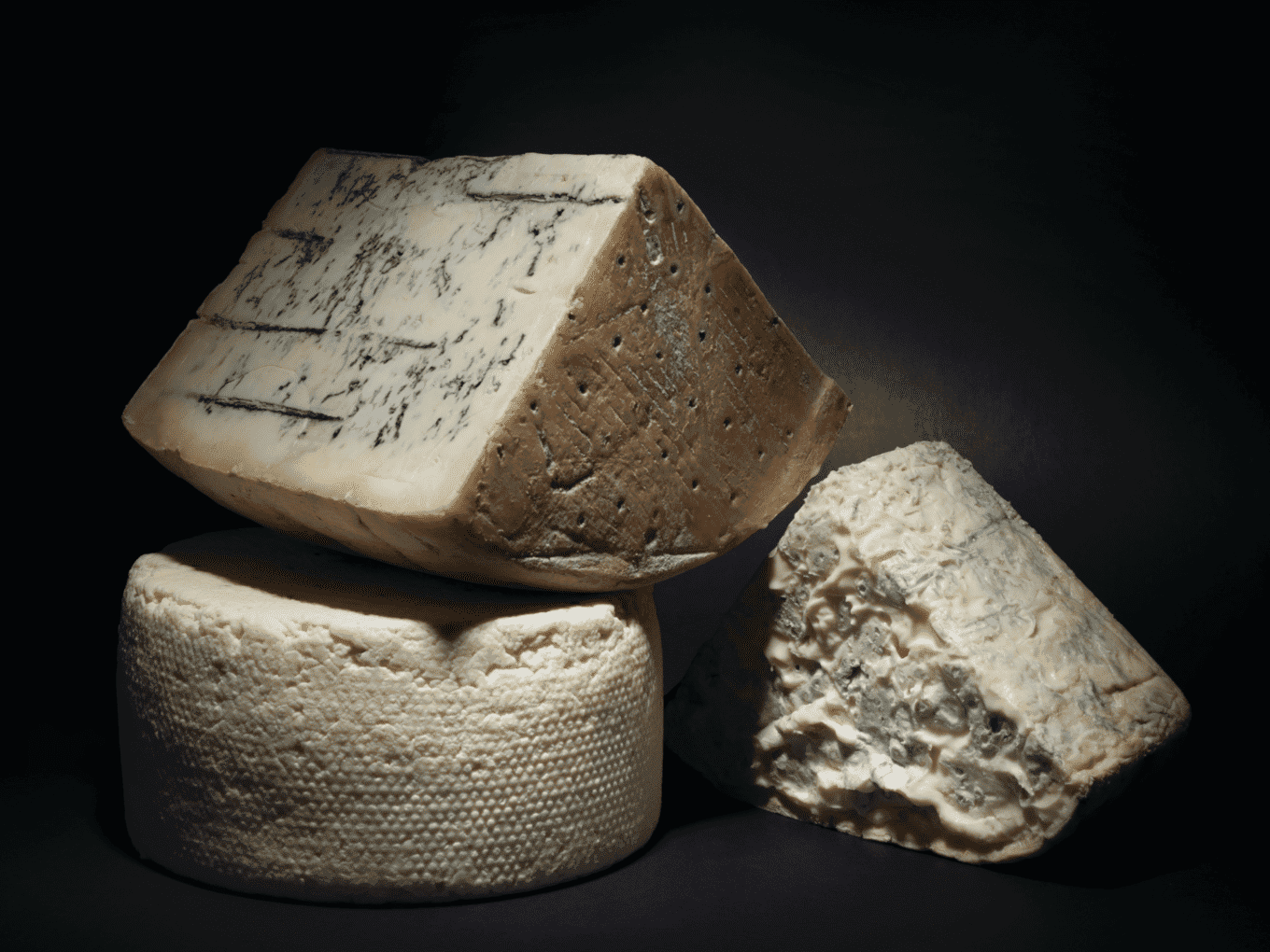
Overall, the DOP allows three different types of Gorgonzola, namely the Grande, Media and Piccola. Not the nomenclature you had in mind? Well, if you’re thinking that the types of Gorgonzola are Dolce and Piccante, you’re not completely off the mark.
Gorgonzola Grande weighs between 10-13 kg and matures for up to 60 days. It has a signature sweetness to its flavour profile and is affectionately known as Gorgonzola Dolce.
On the other hand, Gorgonzola Media weighs between 9-12 kg and matures for a minimum of 80 days. Finally, the smallest version, Piccola weighs between 6-8 kg and ages for at least 60 days. Both Media and Piccola have a little spiciness to their flavour profile. Because of this, they are collectively referred to as Gorgonzola Piccante!
How Italy’s most famous blue cheese is made
Thank you for reading our article on how Gorgonzola’s is made. Without a doubt, this is one of Italy’s most popular exports. Do you prefer Gorgonzola Dolce or Piccante? And how do you like to eat Gorgonzola? Let me know in the comments below.
